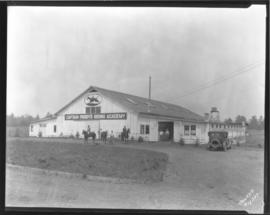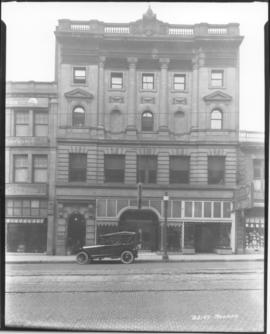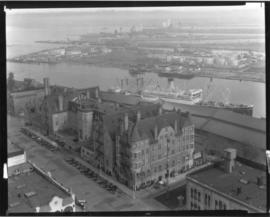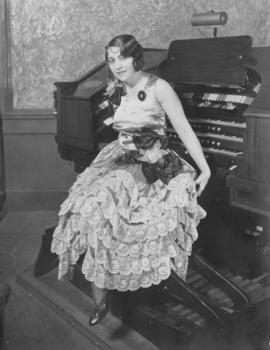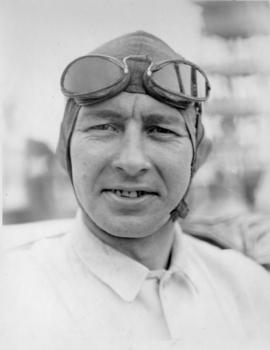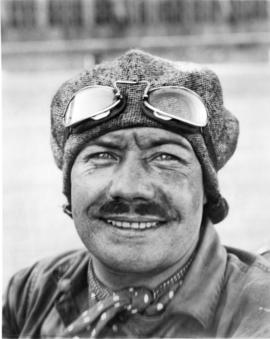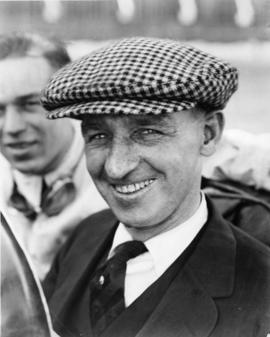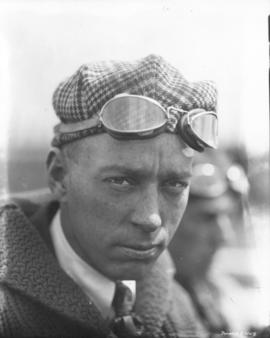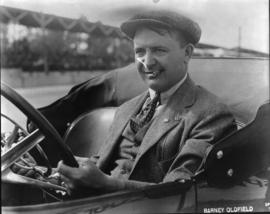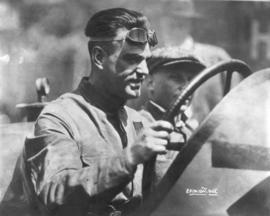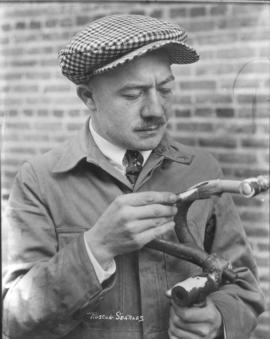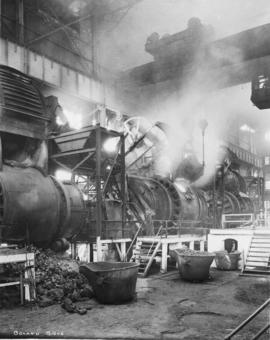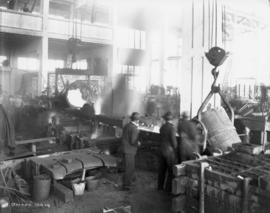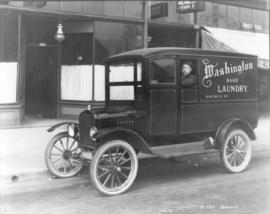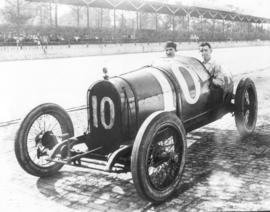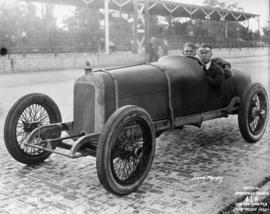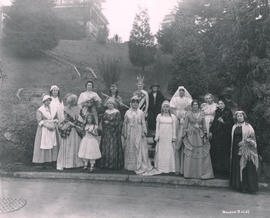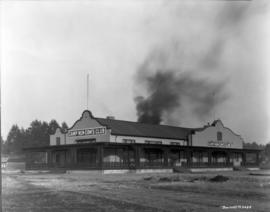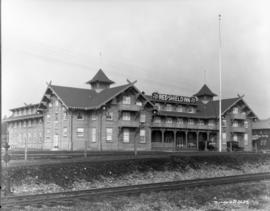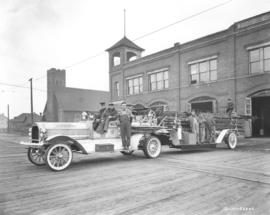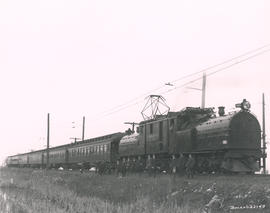ca. 1920. Wearing a jaunty checkered newsboy's cap is Chicago millionaire sportsman Joe Boyer, Jr., in this circa 1920 photograph. Mr. Boyer, accompanied by his "mechanician" Norman Etger, brought his Frontenac to the Tacoma Speedway for the July 5, 1920, 225-mile race. The field was crowded with top racing stars including Ralph Mulford, Cliff Durant, Eddie Hearne, Indy 500 winner Gaston Chevrolet, Roscoe Sarles and Tommy Milton, among others competing for a total purse of $22,500. Mr. Milton and his Duesenberg took first in a record time of 2 hours, 23 minutes and 28 seconds, averaging 95 mph. Joe Boyer was out in the 97th lap with a broken wrist pin. The estimated crowd of 40,000, many in the new 16,000-seat grandstand, were thrilled at the battle between eventual winner Milton and Ralph Mulford, who finished second. (TDL 7-6-20, p. 1-results; TNT 7-3-20, p. 15)
Boyer, Joe; Automobile racing drivers; Tacoma Speedway (Lakewood); Racetracks--Lakewood--1920-1930; Men--Clothing & dress--Lakewood;

